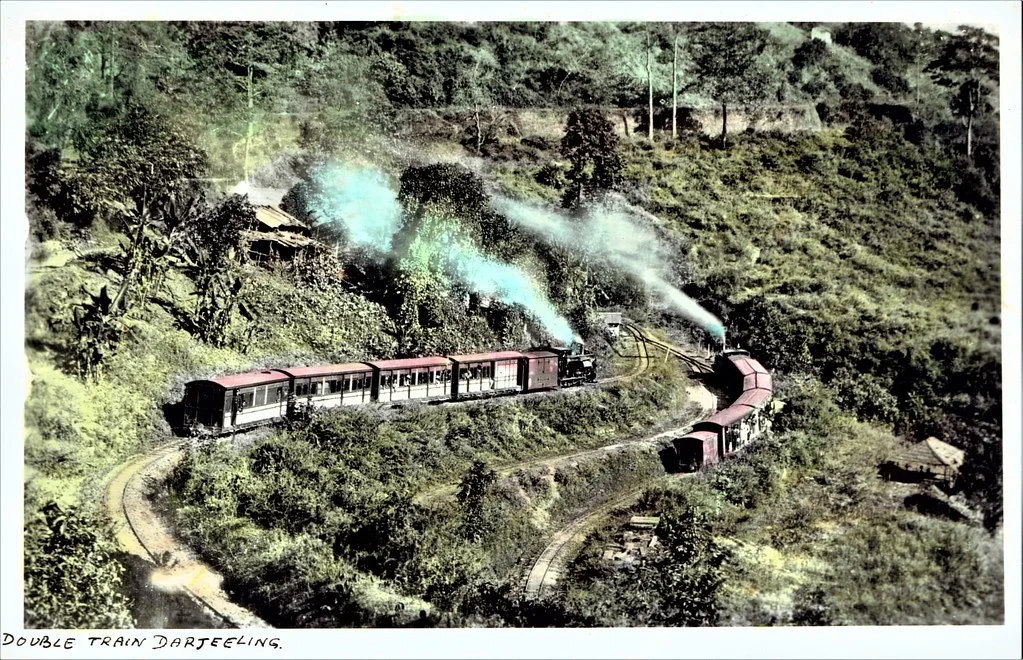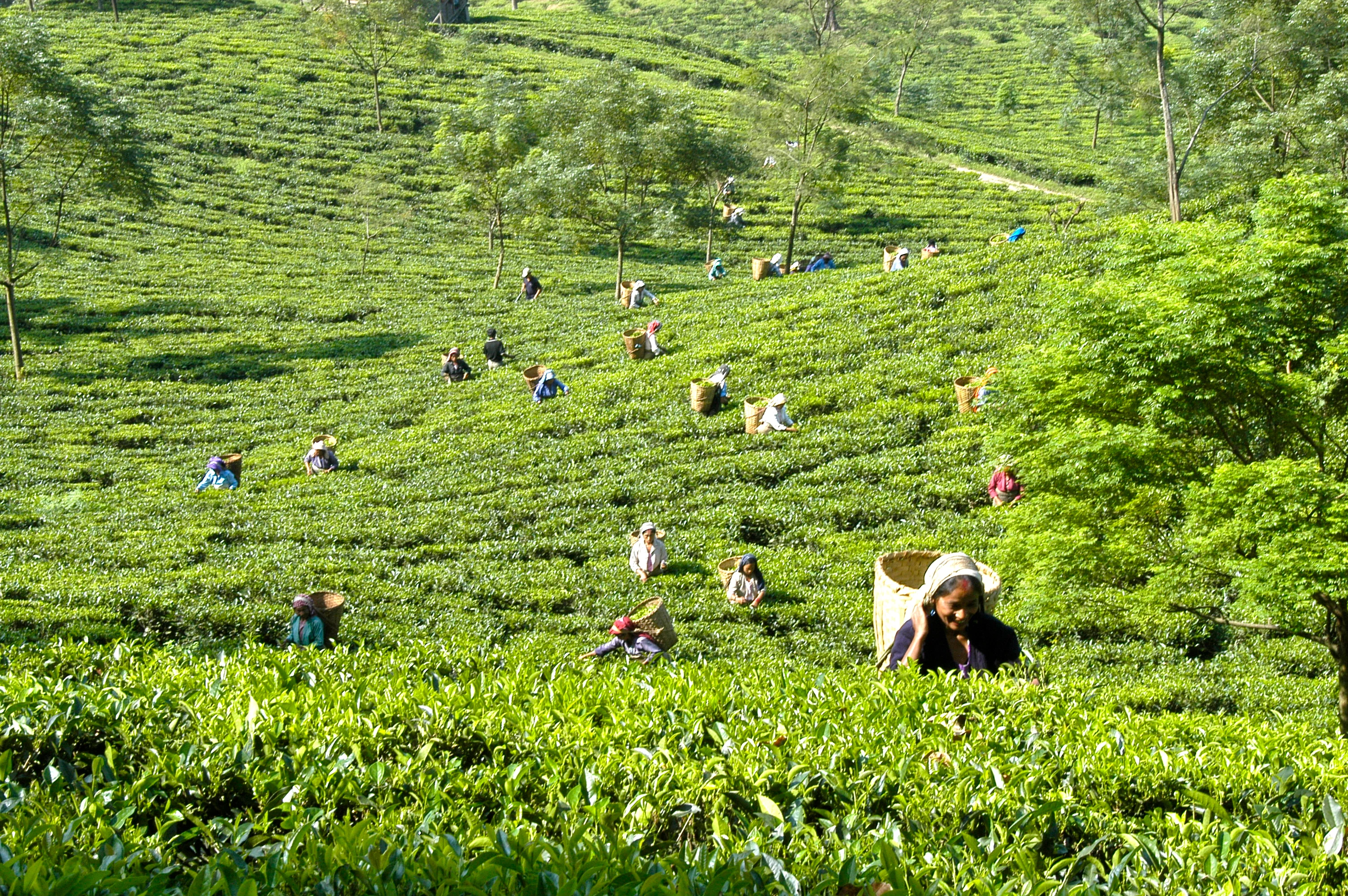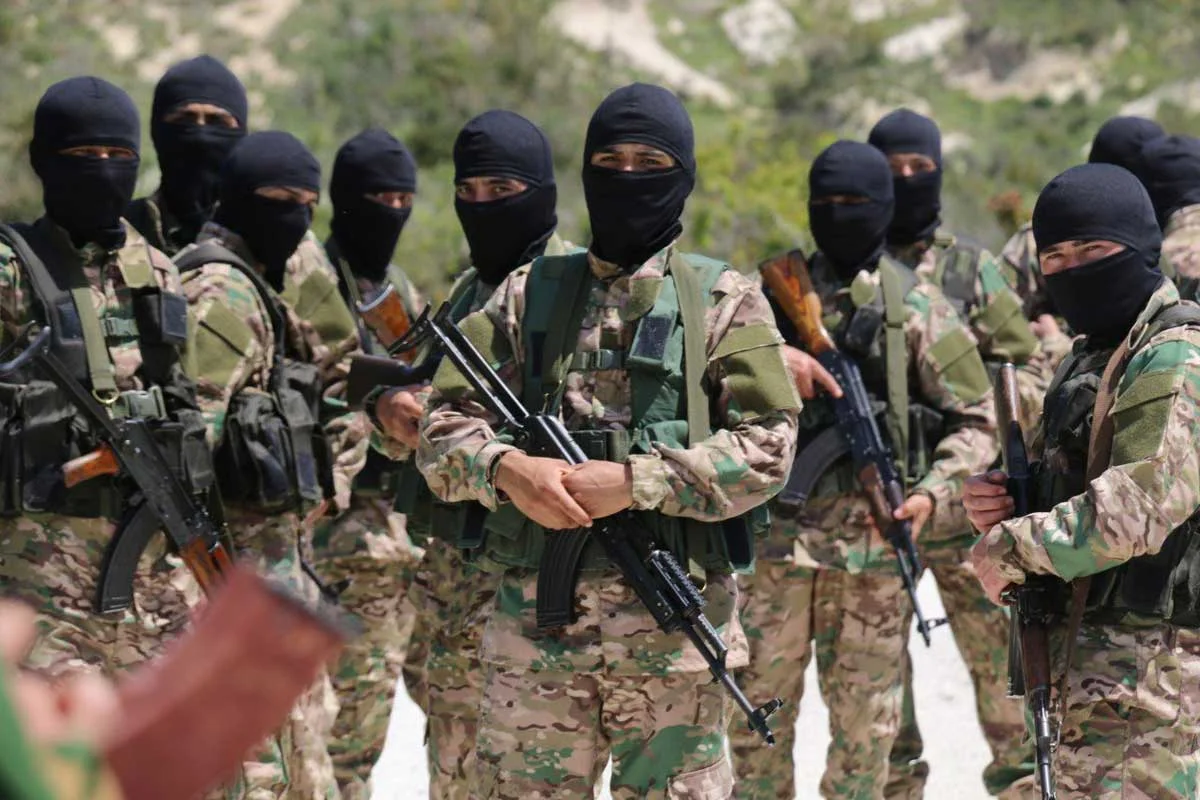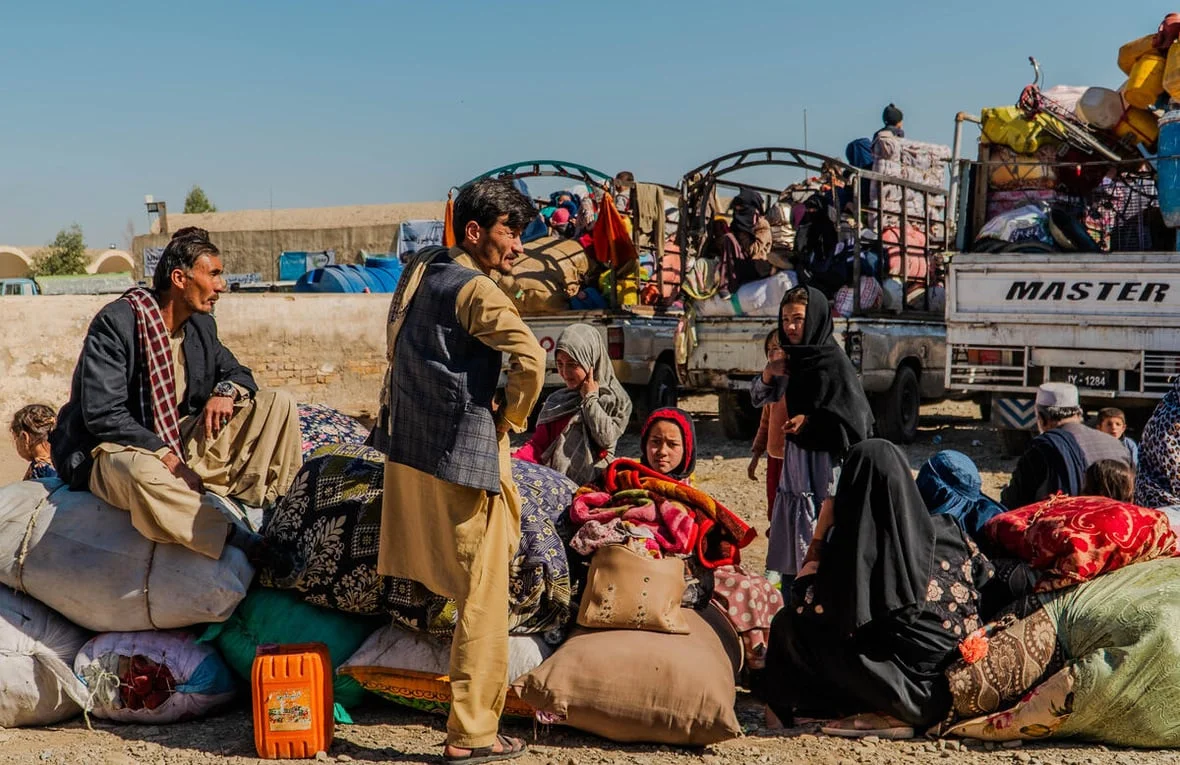The aroma of freshly brewed Darjeeling tea wasn’t the only unexpected element wafting through the crisp December air in 2019. For a travel writer perpetually chasing deadlines and exotic locales, serenity usually meant enduring snoring passengers on a redeye flight. This time, however, a visit to the historic Glenburn Estate in Darjeeling promised a different kind of peace – a taste of history amidst the timeless beauty of the Himalayas.
Established in 1859 by a Scottish tea company, Glenburn soon became intertwined with the legacy of the “Chaiwala family,” the Prakashes, whose dreams were as fragrant as the leaves they cultivated.
Just as I was settling into the history of this place, winter surprised everyone with a snowfall. The familiar sights of Darjeeling were blanketed in white, making it a magical winter wonderland. This lucky twist turned my Darjeeling trip from a relaxing visit into an incredible adventure.
The year 2019 held a secret for Darjeeling. Nestled amidst the usual hustle and bustle, a rare visitor arrived – snow, enchanting Darjeeling aficionados who cherish its ethereal beauty as India’s Queen of hill stations. The Television channels flashed the news with gleaming pictures of snow in Darjeeling on December 26th.
Snowfall in Darjeeling is noteworthy to the average Calcuttan as they endure the brunt of the scorching tropical sun for eight months of the year.
Air tickets to Bagdogra, the nearest airport to Darjeeling, were all but exhausted. Providentially, I used my connections with Spice Jet to obtain a ticket. I departed on the morning’s flight to Bagdogra with the sole intention of relishing the snowy spectacle of Darjeeling.
![Mountain view from Glenburn Estate [Image via Travel Journalist, Subhasish Chakraborty].](https://southasiatimes.org/wp-content/uploads/2024/07/View-of-Mountains-from-Glenburn.webp)
Arrival at Darjeeling
By the time I reached Darjeeling, it was 2 P.M. I had already booked my accommodation at the renowned Glenburn Tea Estate Bungalow. My sole intention was to bask in the uninterrupted sight of snow in this charming hill station. Overnight snow blanketed the entire tea estate and the surroundings in four inches of dazzling white. The sight of locals and visitors alike digging up snow and throwing them at each other was straight out of a “Mills & Boons” novel.
According to the Manager of the Glenburn Tea Estate, “The last time Darjeeling witnessed snow in the month of February was way back in the year 1985.” Here, at the upscale but classy Glenburn Tea Estate Bungalow, the ethereal view of Kanchenjunga—the 3rd highest peak of the world—from my window was awe-inspiring. The stately pine trees, Rhododendrons, Primulas, Magnolias, Orchids, and the houses embracing the Glenburn hillside covered in snow made for a stunning kaleidoscopic vignette.
Glenburn Tea Estate to me is a destination in itself – A plantation retreat that dates back to 1860. The estate was first conceptualized by a Scottish Tea company. Later on, the House of Prakashes took over the reins. In Indian tea circles, people popularly refer to them as the “Chaiwala Family.”
In terms of legacy, Glenburn guests can rest assured of a century of tea manufacturing experience. They offer tea tasting, factory visits, immersive cultural experiences, and sustainable environmental initiatives to discerning guests. The Glenburn experience is every bit eco-friendly. The best part is that they grow their own fruits and vegetables, which are 100% organic.
Hospitality at the Bungalow
The Bungalow holiday experience, which is such a rarity in today’s hospitality landscape, comes as a breath of fresh air. Here in this part of the world, The Burra Bungalow and The Water Lily Bungalow together offer an outstanding cozy Himalayan experience that remains unmatched. The essence, however, is on the “Colonial” feel, and the décor also complements the same ambiance—old Burma teak for floors, cast iron window frames, and balconies to spend intimate moments.
I for one would strongly recommend prospective visitors to embark on the “Walking Tour”. It is not just refreshing; it is every bit delightful. Most of the trail is downhill, and anybody in good shape can opt for this one-of-a-kind experience.
The Tea Factory
The Tea Factory visit will be an eye-opener for many. They observe workers bringing tea leaves from the gardens and weighing the leaves. Visitors witness the manufacturing process: withering, rolling, fermenting, drying, and sorting. The hosts also offer guests unique tea-tasting options, providing an array of different blends, aromas, and flavors.
Like many visitors to Darjeeling, my passion for Darjeeling Himalayan Railways drove me. I became interested in DHR when I undertook that unbelievably nostalgic trip on the famed “Toy Train” back in the year 2010. This experience changed my perception of rail travel in India.
Ever since the United Nations Educational, Scientific and Cultural Organization (UNESCO) declaration conferring the status of a ‘World Heritage Site’ to the Darjeeling Himalayan Railways (DHR), awareness about this railway has increased manifold. The pioneering work undertaken by the London-based Darjeeling Himalayan Railway Society has positioned the DHR well in the elite world railways network today.
Darjeeling Himalayan Railway
I have always believed that the Darjeeling Himalayan Railway is one of the most unique train journeys anywhere in the world. It fills my heart with joy when I see the “Toy Train” whirling majestically around the Batasia Loop. According to my Darjeeling mate Sanjay Gurung, who works as an apprentice with the DHR, it is among the “most photographed railway sites in the world”. And why not?
This time when I visited the Batasia Loop, I made it a point to further heighten my sense of admiration for this unique railway system. On the advice of my local Nepalese friend from DHR, Sanjay, I took a vantage position in a vacant piece of land at a level with Loop 3. What I saw from there was incredible, to say the least. Here, the train hangs out for dear life on a spur—yes, a spur, and nothing else. To see the train suspended in space with its squealing wheels, and propelled by an engine that never stopped whistling, was awe-inspiring as it was scary.

The DHR Club of Darjeeling
I was most impressed by the recent endeavors undertaken by the DHR Club. They promoted awareness about this unique railway system by launching custom-designed notebooks and greeting cards. These were crafted to perfection by two promising school-children of Darjeeling. A pack of 10 costs 5 GBP and the funds thus generated goes towards the further improvement of the DHR.
What must come as a surprise package for the young ones, though, is the launch of a leaflet titled, “My Diary of a Train Journey.”
It is an exclusive four-page leaflet with questions pertaining to the DHR. The kids are expected to answer (fill up) these questions on board the toy train. The focus of the DHR Club is clearly on the children, who have always had a sentimental attachment to the Toy Train.
Tourist Spots
Darjeeling has its share of tourist landmarks. These include the Natural History Museum, The Padmaja Naidu Himalayan Zoological Park, the Himalayan Mountaineering Institute, The Shrubbery Park, Observatory Hill, Darjeeling-Rangeet Valley Passenger Ropeway, Lloyd’s Botanical Garden, and Tiger Hill, to name just a few.
The Natural History Museum is close to the town’s principal promenade. It has a good collection of rare Himalayan fauna. The Padmaja Naidu Himalayan Zoological Park is a one-of-its-kind zoo that houses the endangered Tibetan Wolf, as well as the Snow Leopard and Siberian Tiger. I had never visited a zoo at such a high altitude before. The PNHZ is located at a height of 2133.5 meters above sea level. The colossal Kanchenjunga provides the picture-perfect backdrop to this remarkable zoo. The Red Panda is the cynosure of all eyes at this zoo.
![Entrance to The Padamaja Naidu Himalayan Zoological Park, Darjeeling (PNHZP) [Image via Getty]](https://southasiatimes.org/wp-content/uploads/2024/07/padmaja-naidu-himalayan-zoological-park-darjeeling.webp)
Mountaineering in Darjeeling
Mountaineering as an activity has become very popular. Darjeeling is the native place of the great Indian mountaineer Tenzing Norgay. He, along with Tenzing Norgay, was the first to conquer Mt. Everest.In his memory, the Himalayan Mountaineering Institute has been providing yeoman’s service in the domain of Himalayan mountaineering. The institute works in close collaboration with the Swiss Foundation for Alpine Research.
The lure of the Darjeeling – Rangeet Valley Ropeway is irresistible. This ropeway connects Darjeeling with Bijanbari. A ride on this mono-cabled ropeway can be exhilarating. I was initially frightened by the height, as most first-time riders would be. The ride commences from a height of 7000 feet from North Point and descends to a low of 800 feet, which is quite a descent. I was told by the operator that this Ropeway was the largest passenger ropeway not only in India but in Asia as a whole.
Also See: Melting Glaciers: A Threat to South Asian Topography
Tiger Hill – A Tourist Attraction at the Darjeeling
On my earlier visits to Darjeeling, I was unable to visit the much-hyped “Tiger Hill”. So I made it a point to visit this romantic spot at the break of dawn. I had left instructions with one of the bellboys to give me a wake-up call at 4 A.M. for my visit to Tiger Hill the next morning. And believe me, not only did he come knocking at my door at 4 A.M. sharp, but had also made arrangements for my cab. Since the chauffeur failed to turn up on time, the bellboy himself volunteered to drive the cab all the way to Tiger Hill and back. This is what you call “Quality Service” with a human touch, which is a characteristic feature of the world’s famous Glenburn Tea Estate.
We traveled through the narrow alleyways of Darjeeling and passed by Ghoom to reach the pinnacle of the hill. We were at an elevation of 8,507 feet and hordes of tourists were flocking in even though the sun was yet to rise. Within an hour or so, the ethereal sight of the red molten ball rising on the far horizon in the midst of the snow-capped Himalayan peaks attracted our attention. For the first time visitors like me, the remarkable scene of sun rising early in the morning as viewed from Tiger Hill was a touch poignant.
Describing the beauty of the sunrise from Tiger Hill, one renowned Travel Writer was quoted as saying – “Your visit to India is incomplete even if you have visited the Taj Mahal by moonlight a hundred times but haven’t witnessed the spectacular sunrise at Tiger Hill”.
![Tiger Hill, renowned for its panoramic views of the Himalayas at sunrise, is a popular destination near Darjeeling, India [Image via Deccan Herald].](https://southasiatimes.org/wp-content/uploads/2024/07/deccanherald_import_sites_dh_files_article_images_Prayer-flags-at-Tiger-Hill.webp)
The Gorkhas
At Darjeeling, you are actually in Gorkha territory. The Gorkhas are a sturdy lot – those valiant soldiers who have carved a niche for themselves in the annals of Indian Army purely by dint of their military prowess. The Gorkhas are the inhabitants of the Darjeeling hills and they have Mongoloid features and are conspicuous by their “Khukri” knives that are strapped to their waist. They are known to be very hospitable though.
You are also likely to come across a sizeable number of Bhutias of Tibetan origin. They have settled here in the Darjeeling hills so as to evade the persecution of Tibetans in Tibet by China’s Red Army.
The Curio Shops at Darjeeling
As far as shopping in Darjeeling is concerned, numerous curio shops are dotting the Darjeeling landscape. The most popular curio shops can be found around Chowrasta, Chowk Bazar, Laden La Road, Nehru Road, the Motor Stand, and the Mahakal Market. Visitors are fascinated by Tibetan Thangkas in particular. Carpets and wooden engravings too are in great demand.
In terms of quality, the Manusha Emporium at Nehru Road is much sought after by the visitors for its array of silk and handicraft products. For intricately designed Tibetan carpets, the best place in town is the Hayden Hall on Laden La Road.
While in Darjeeling, don’t forget to grab your packet of 100% authentic Darjeeling Tea. The Nathumull’s in Laden La Road is trusted by the tourist fraternity.
Though the December snowfall may be a fleeting memory by July, the essence of Darjeeling lingers on. The aroma of freshly brewed tea, the echo of the “Toy Train” whistle, and the warmth of Gorkha hospitality remain etched in the hearts of every visitor. Darjeeling is more than just a destination; it’s an experience that transcends seasons, leaving an indelible mark on your travelogue of memories.
Traveler’s Fact File
Getting There To The Darjeeling
Air: The nearest airport is Bagdogra and there are regular flights from Kolkata and Delhi to Bagdogra. Indian Airlines, Spice Jet etc…operate regular flights to Bagdogra from Delhi and Kolkata.
From Bagdogra one can reach Darjeeling by road and the distance of 93 Kms. can be covered in 2.5 hours. Hired taxis and cabs are easily available at Bagdogra Airport.
Rail: By rail, the nearest railway station is New Jalpaiguri. Trains like Darjeeling Mail, Kanchanjunga Express, Rajdhani Express, Dadar-Guwahati Express, and Guwahati – Bangalore Express, etc halt at New Jalpaiguri railway station.
Another innovative way of reaching Darjeeling is by embarking on a journey by the world’s famous ‘Toy Train’ that departs from New Jalpaiguri Railway Station. The journey by the ‘Toy Train’ is covered in 7.5 hours.
Accommodation: Hotels to suit every budget are available in Darjeeling town. Up-market hotels like Windamere, Sterling Resorts, New Elgin Dekeling, Sinclairs, Darjeeling Gymkhana, etc… offer the very best of mountain hospitality. The rooms are spacious and offer breathtaking views of the lofty Himalayan peaks including the Kanchenjunga. The food too is high in quality and the choicest of cuisines ranging from Continental to Chinese and Indian (Tandori) are available. Most of the up-market hotels also have exclusive fire-place. Running hot and cold water is available along with 24-hour room service. The pubs are well stocked and are ideal to unwind after a day of sight-seeing.
The views expressed in this article are the author’s own. They do not necessarily reflect the editorial policy of the South Asia Times.







